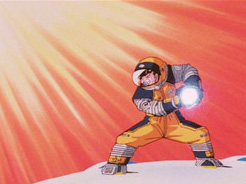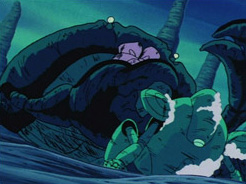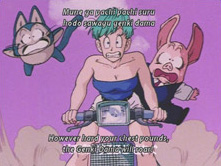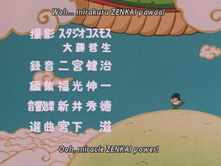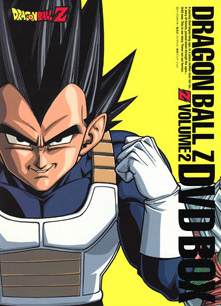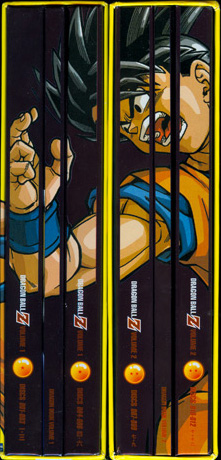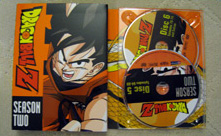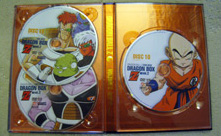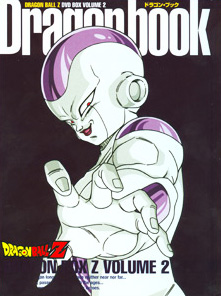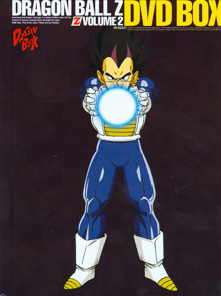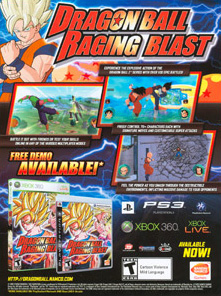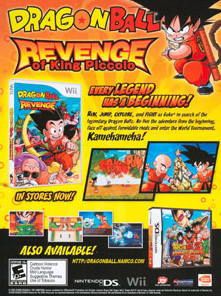For the type of fandom we serve, nothing short of an announcement that Toriyama himself was going to supervise an entirely new series could even come close to calming the excitement over domestic “Dragon Box” releases.
We have covered the announcement and subsequent releases extensively here on the site. Our major feature prior to the first set’s release provides a wealth of historical information and emotional responses. Anything you are looking to learn about the sets and their importance can be found there. We reviewed the first set upon its release in November 2009, and came to the conclusion that it was just about everything we could have hoped for in a domestic release (with a few incredibly minor fanboy nitpicks, of course).
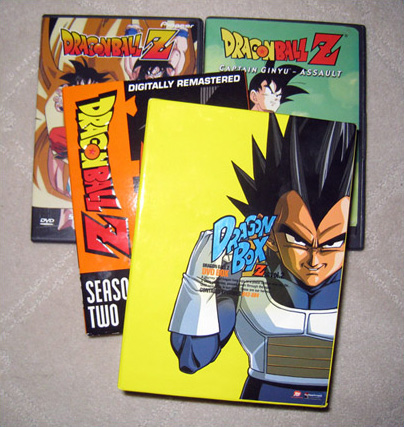
FUNimation’s announcement of Dragon Ball (Z) Kai for North American distribution beginning in May 2010 seems to have at least partially overshadowed the significance of the Dragon Box sets. Especially with this particular set covering approximately the same material currently airing with Japan’s Kai broadcast, it can feel like there is already some double-dipping going on for a lot of fans.
Is that a fair concern, or should appropriate attention be given to (arguably) the first proper release of many of these episodes in North America? Does the extraneous filler material weigh down an otherwise enthralling storyline, despite the pristine presentation?
Quick Details:
| ASIN: | B002Y0KR7A |
| Publisher: | FUNimation |
| Release Date: | 16 February 2010 |
| MSRP: | $59.98 |
| Format | DVD |
| Contents: | DBZ TV Episodes 43-84 |
|
|
|
Review of this set was made possible through a copy provided by FUNimation. If you are interested in contributing to the site, please visit our “Donate” page or contact us directly.
Review By: Mike LaBrie (VegettoEX)
The majority of this review will be written and presented from the perspective of what it is to most North American consumers: another release of the Dragon Ball Z TV series on DVD. Where appropriate, comparisons to Japanese products (such as the “Dragon Box” sets and single-disc DVDs whose masters they are based on) will be made for purely educational purposes. What a Japanese release did or did not also provide will not be held against the new American product; it will be analyzed and weighed on its own merits and pitfalls.
Content:
Since it first began in syndication on North American television in 1996, the Dragon Ball Z TV series has been constantly re-run (occasionally also in raw Japanese and Spanish courtesy of the International Channel and Telemundo) and re-released on home VHS and DVD. Years prior to that, fansubs of the series ran rampant through tape traders and eager, new anime fans. By now, anyone who is interested more-or-less has an idea of how this part of the story goes:
- We pick back up toward the end of the “Fake Namek” filler arc, and our heroes get back on track to their intended destination
- Goku continues his journey through space to meet up with his friends and son on Planet Namek, wary of Vegeta (who is also there), and a new villain named Freeza
- Freeza, an intergalactic genocidal maniac of extreme politeness and courtesy, has come to Planet Namek with his minions (namely Zarbon and Dodoria) to collect the Dragon Balls for himself
- Vegeta slowly takes on Freeza’s henchmen one-by-one (Kewi, Dodoria, Zarbon), learning about Freeza’s cover-up of the Saiyan planet and race destruction, and stealing most of the Dragon Balls for his own personal gain
- Meanwhile, Gohan and Kuririn meet up with several Namekians, including the child Dende, as well as the Great Elder and his attendant, Nail
- With the defeat of his minions and nuisances growing more numerous, Freeza calls for the Ginyu-Tokusentai, a special force of super-powerful beings that work for him
- Vegeta is able to defeat the time-stopping member Ghurd, but Recoom proves too much of an opponent for the heroes; luckily, Goku arrives in time to save everyone, but temporarily swaps bodies with Ginyu himself before an unlucky frog fixes everything
- Goku is tossed into a rejuvenation chamber to heal the wounds caused to his body by Ginyu, while our heroes summon the Namekian Super Shenlong, Porunga; Piccolo is wished back to life and transported to Planet Namek with two of the three available wishes, but the Great Elder unfortunately passes away before a third wish can be made, turning the Dragon Balls to stone
- Freeza arrives on the scene, and is convinced to transform into a more powerful state by a naive Vegeta
- Vegeta, Gohan, and Piccolo do battle with Freeza up through a second-transformation (third form), but he is proving too much for them, and Goku has not yet healed…
If you are reading this particular review on this particular website, chances are that you already know all of that information and skipped down ahead. That is fine! You probably also have long-standing opinions on the content of the 40-odd episodes contained within this box set and no review will change your stubborn thoughts… but in the interest of complete dissection, we will go ahead anyway.
We are introduced to what can sometimes feel like an overwhelming number of new characters with this story arc; where as the introduction of Raditz set up only two more villains (Nappa and Vegeta, with the possible extra addition of the Saibaimen), this storyline continuation brings us a new ringleader and an assortment of minions… not to mention an entirely new planet that happens to be populated with its native race.
- Freeza: Just about everything we need to know about this character is given to us in this batch of episodes. His “refined gentleman” manner of speaking (more appropriately described in Japanese as keigo) shows him being incredibly humble during discussions, all while dropping obvious hints at superiority and arrogance; his level of politeness is, in an almost ironic fashion, completely undercut by the atrocities he is committing in the process. Ryusei Nakao (who previously played Tambourine in the first TV series) brings the character to life in a way that can almost not be put into words. He is an amazing villain, and one that we cannot wait to see lose his marbles.
- The Minions: Whether it is Zarbon or Dodoria, one of the many nameless cannon fodder, or even one of the hysterical Ginyu-Tokusentai, Freeza has amassed an army that is unrivaled by most other fictional characters. The amount of fear they showcase at the prospect of failing under the supervision of their leader shows just how terrible he is. They all have unique and iconic character designs, are acted with dead-on accuracy (from veterans like Zarbon’s Sho Hayami and Recoom’s Kenji Utsumi), and help to set this part of the story apart from all others.
- The Namekians: If it were not for Saichōrō (the Great Elder), the race would in all likelihood be extinct — that has to count for something. Characters like Nail do not nearly get enough screen time to solidify themselves the way that some of Freeza’s minions do, but they make a name for themselves, none-the-less. We will see much more of Dende in the story later on, so it is always fascinating to go back to his humble roots (and quite a tragic situation under the watchful eye of Muri).
There is an interesting balance of filler material in this set of episodes. On one hand we have episodes like Goku (Stuck to the Roof of a Spaceship) vs The Sun™ and Bulma vs the $%&@ing Crab™ that remind us how talented Akira Toriyama truly is and how wonderfully-paced the original manga is. On the other hand, we have back-story expansion with characters like Vegeta and Ghurd that do a great job of setting up their long-standing grudges and impending fights. Regardless of how you feel about filler material and its inclusion in a long-running shōnen like this, it is there for you to deal with. Those with a low tolerance for nonsense may wish to hold out for FUNimation’s domestic release of Kai, while those who love every minute they can get with their favorite characters and Shunsuke Kikuchi’s musical score have a lot to love about this story arc.
Even ignoring filler material, it is at this point in the story that animation quality begins to drastically differ from week to week. It was something that had been occurring in the series since the very beginning, but the Namek story arc shoves it front and center. Watching on a weekly basis, you may have been able to put it aside as a minor issue… but as with all home releases of the series, watching a batch of episodes in a row will drive you moderately batty with the inconsistent and at times woefully awkward art:
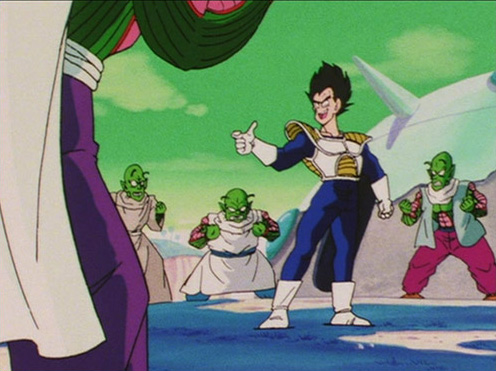
Returning to Shunsuke Kikuchi’s score, selections from tracks like “An’un Uzumaku Namekku-Sei” (“Dark Clouds Swirl over Planet Namek”) are wonderful toss-backs to pieces from the original TV series, bringing a sense of consistency and still hitting that ominous tone for a new locale. This consistency makes sense, as several pieces from the original Dragon Ball movies are actually used during this time period (and into the next set of episodes). Other music from DBZ movies 1 and 3 also make several appearances during key scenes, and will be used to an even greater emotional extent in what will be FUNimation’s next Dragon Box set. As for additional music, selections from “Kyōfu no Ginyû Tokusentai” (“The Fearsome Ginyu Special Force”) are among the most recognizable and memorable.
We have all discussed the series so many times since its original airing. In lieu of any further (needless) generalizations, but to still celebrate this part of the storyline to its fullest extent, I present to you, from the story arc contained within the second Dragon Ball Z “Dragon Box”, and because everyone loves a good list, my…
Top 5 (Namek Story Arc, Pre-SSJ) Fights
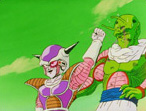
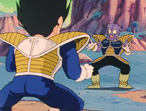
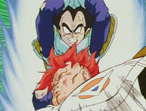
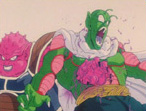
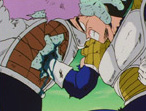
Yes, many of the fights in this portion of the series involve Vegeta. He has taken on a role somewhat resembling a team captain (quite begrudgingly), all in anticipation of “Kakarrot” finally showing up to help with this awful situation. Of course, he does not really want to see Goku arrive and show him up, because that would prove just how incompetent he is. Oh, conflicted characters! You make for interesting stories.
The Freeza arc and Planet Namek storyline tends to split certain folks within fandom. It is the logical and emotionally-fulfilling conclusion to everything that has been leading up to these moments since Raditz’s arrival… but it is also a very taxing time investment. As noted, even regardless of your feelings or preferences for filler material that is exclusive to this TV adaptation, no viewer can deny just how much things are getting stretched out as far as the director can take it. Only you can decide for yourself if you are willing to make that investment again, now that the series has been released domestically with the ultimate presentation of its original form. For those that gave a resounding, “We won’t stand for this!” during the orange brick release, now is your time. This is the first uncut and uncropped release of DBZ TV episodes 43 through 67/68 in North America (due to weird episode cutting in 1999 with the beginning of “season three”), and that fact alone might be worth it to you.
Presentation:
This is the best-looking release that Dragon Ball Z has ever, and probably ever will, receive in North America. Unlike FUNimation’s previous season sets which genuinely warranted a new look with each subsequent release due to the abhorrent and insulting discrepancies with smoothing and brightness alterations from “season” to “season”, there is not a whole lot “new” to say about FUNimation’s second Dragon Box set. We have already covered the back-history and significance of the Dragon Box sets both in our extensive feature and our review of FUNimation’s first set. Those who are jumping into this realm of releases completely fresh may want to go back and learn a little bit before continuing. For better or worse, much of our commentary on this second set will be near-identical to the previous set.
FUNimation’s generational copy of the Dragon Box masters has a near-imperceptible difference from the original Japanese print. Having already covered these differences in the review of the first box set, all we can truly add to the conversation at this point is say that it is wonderful, what we have waited years for, and is leaps and bounds above any video print FUNimation has released prior.
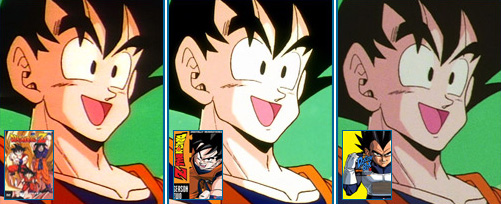
FUNimation’s first masters were much closer to their true selves, but heavily pushed toward a weird blue-ish/red-ish saturation that created a bleeding effect with the colors. The “orange bricks” blurred and smoothed away the details and pushed the saturation even further, with this corresponding “Season Two” easily being the most offensive of the entire run — the brightened colors and lack of detail was downright disgusting to even the most delusional supporters. The Dragon Box master restores the original color scheme and full detail in all areas without compromise.
It is a bit of a strange situation when comparing these releases. Static shots from prior releases do a perfect job in showcasing how miserable they were, while only a genuine TV-viewing experience of the Dragon Box release can accurately showcase just how fantastic the transfer is. Colors are natural and capture the appropriately-aged feel of the show. The new progressive transfer from the actual film masters presents a fluid motion that, while the majority of the series simply does not have the fidelity to take advantage of, does indeed prop up the scenes that have that extra bit of painstaking detail from the original animation team. For all intents and purposes, this is how the show is supposed to look.

It was a minor point of contention among fans leading up to its release that FUNimation’s Dragon Box discs would contain seven episodes each. While this is semi-standard in the North American anime market in today’s world, the fact that the Dragon Boxes’ main selling point was the video quality brought about some apprehension. With the Japanese discs containing only six episodes and one audio track each, would the addition of an extra episode and extra audio track compromise the video quality in a discernible and impactful way?
Well, if our analysis of the first domestic set told us anything, it was that any bitrate adjustments would be visually negligible to all but the most hardcore of the videophile viewers… which includes us! The original Japanese discs’ compression was overkill, a convenient benefit of only having the single audio track to include and six episodes per disc. Even with the two audio tracks and an extra episode per disc, the FUNimation releases rank up there as possibly the second-best DVD release of the series in existence, just a tiny notch below the Japanese originals.
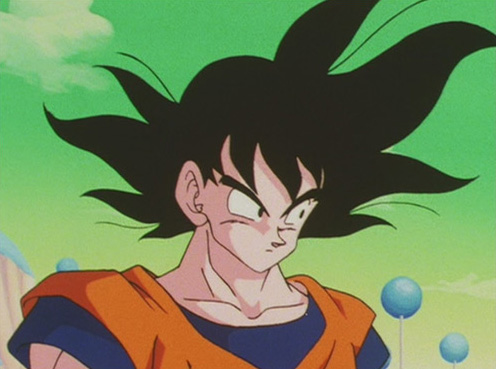
Similar to the first domestic set, the video framing is ever-so-slightly different from the R2 DVD releases. FUNimation’s Dragon Box does away with the ~4 pixel left-and-right black buffer present in some episodes on the R2s, but instead has a ~1-2 pixel buffer at the very top of the frame. The placement of the frame also seems to be shifted down by a couple pixels. It is all very minor and hardly affects the viewing experience, but it is worth pointing out.
The DVD menu system is a stylistic (yet redrawn) carbon-copy of the original Japanese menus, with the obvious changes in episode counts and English text. The menus are also still images, as opposed to the Japanese motion menus with an actual scene playing in the background. Much to our delight, tunes from Shunsuke Kikuchi’s original score play over top the menus. While the show itself is indeed the correct 4:3 aspect ratio, the menus will adjust to display anamorphically on widescreen displays, an update from the Japanese release. The discs are automatically set to the Japanese language track with its corresponding subtitles.
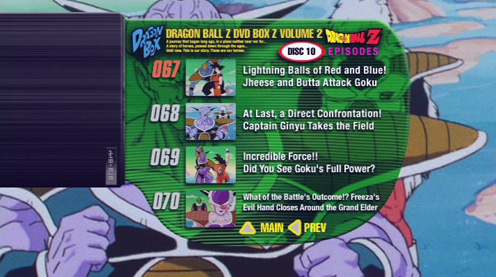
The one consistent menu from disc-to-disc is the “Setup” screen, which essentially takes the place of the “Story Mode” menu item from the Japanese Dragon Box discs (a feature known as “Marathon Mode” in prior FUNimation releases). This does mean that no “Marathon Mode” is present on the FUNimation Dragon Box discs; “Play All” will literally play each episode with all of its included opening and ending themes, recaps, eyecatches, and previews. With part of the point of this release being that it contains “everything” that is a part of the included episodes (and the intended audience clamoring to have them returned for so many years), the loss of a “Marathon Mode” is a minor one.
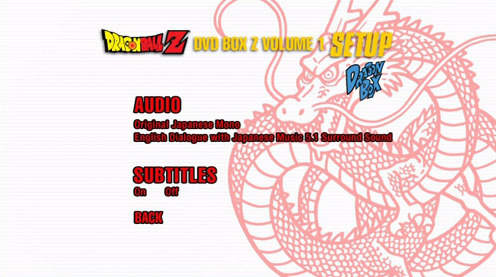
As with the first Dragon Box set from FUNimation, the included audio tracks are a default Japanese language track, and an English dub with the original Japanese musical score. The Japanese track is encoded as its original mono at 96 kbps, as opposed to the original Japanese discs which encode it as faux-stereo (the same mono track duplicated in both stereo channels) at 448 kbps. There is a slight hit to the clarity if you have the sound system capable of comparing the two, but it is more than sufficient for a release of this age. The audio quality is also far superior to any inclusion on prior FUNimation releases, which alone should make fans happy. This always has been and always will be our preferred method of viewing (and listening to!) the series, containing all of our favorite, talented voice actors over top Shunsuke Kikuchi’s score.
The English dub track, a carry-over from the prior orange bricks where it debuted, mixes the majority of the TV broadcast dub with some slight line/acting adjustments over top the original Japanese score. No pure “broadcast” track, exactly as aired on Cartoon Network in North America with scores by Faulconer Productions and Nathan Johnson, exists on this set. An admitted “afterthought” of an inclusion by FUNimation for these sets, the English dub track was not spot-checked for review.
Similar to the Japanese releases and as with the first domestic set, the master audio for the opening and ending themes is significantly clearer than the standard episode audio. It can actually be a little jarring going back and forth in audio quality.
As with the first set, minor adjustments have been made over time to FUNimation’s subtitle font and display, and the Dragon Box carries on this tradition. Perhaps the biggest update is the addition of romanized song lyrics at the top of the opening and closing themes, in addition to the standard translation at the bottom. Those who have not already memorized the lyrics provided here on the website can sing along karaoke-style in the comfort of their own living room.
We discussed available disc space and arguments for additional audio tracks at greater length in our review of the first set; all of those points remain consistent with the second domestic release. For the very specific type of fans that we are, it is a conversation that falls further and further off our radar with each subsequent release, especially with the promise of a more “faithful” dub with the upcoming release of Dragon Ball (Z) Kai from FUNimation. It was never an interest of ours to begin with, so a “perfect” or “definitive” English dub of the series here on the Dragon Box sets matters very little — and the lack of an American “broadcast” audio track is no skin off our back.
At the end of the day, the content and presentation of this set is not for everyone. Whether artificial or genuine, entirely in the heads of fans or purposefully designated by the companies responsible for the franchise, this is a series with a divided fanbase. Where do you fall? If you care even one ounce about how the series is treated and presented, it is this Dragon Box release that has been brought over specifically for you. Enjoy it.
Packaging:
Since their initial announcement, FUNimation has stated that the goal with their own version of the Dragon Box was to bring North American audiences what the Japanese had… or at least as close to it as they could feasibly provide. This was confirmed with the first set, and carries onward with the second set. Interestingly, the artwork of Vegeta used is of the character from later in the Cell story arc, and is from the back of the second Japanese DBZ Dragon Box set (which contained episodes 148-291, far removed from this set’s 43-84).
Combined with the first set, the forward-facing open spines continue the image of Goku previously used in the same way on the two, giant Japanese Dragon Box releases for the DBZ TV series:
Similar to the first Dragon Box set and the orange bricks that preceded these releases, the discs are layered on top of each other within the packaging. This “stacked” style is presumably to save vertical space. Each side of the DVD-holding “book” holds three discs each, with one disc across from two stacked-discs:
This is easily my least-favorite style of physical DVD packaging, but there are few other ways to arrange the discs so compactly in a case that is the same height as a standard amery case. The discs never feel like they are fully snapped onto their holder section, while (somehow) simultaneously feeling as if they will slip out and get scratched at any moment. It just does not feel all that solid.
The discs are imprinted with a character image that corresponds to the content of that disc (in order: Bulma, Freeza, Dende, Kuririn, Butta/Recoom/Jheece/Ghurd, Ginyu). It is unfortunate that the discs themselves do not state exactly which episodes are on them for a quick-glace pop-in; however, as all discs have seven episodes, basic math gets the job done.

As with the first set, the lack of any on-disc bonus materials is completely irrelevant due to the inclusion of the wonderfully-translated “Dragonbook” sections. The two original Japanese books are being broken down into seven, smaller books to be spread across the domestic sets. The second FUNimation set and book pick right up where the first left off.
The “Dragonbook” is broken down into several sections:
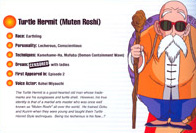
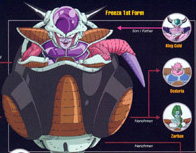
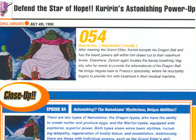

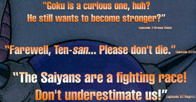
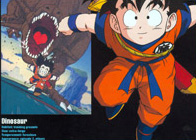
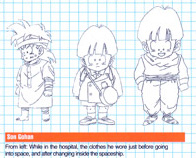
There appear to be no inconsistent spellings and errors that were occasionally present in the first box’s book. Everything is lovingly translated and carried over from the original Japanese printing. Perhaps the only layout “error” is that a bit of wording on Tenshinhan’s profile bleeds into his character art, obscuring the word “to” ever-so-slightly. If that is all we can come up with to “complain” about, we are on a roll with these books…!
The book is a wonderful inclusion, and we look forward to each subsequent one with the following box sets, which will presumably carry through with the additional columns and episode guides from the original Japanese books.
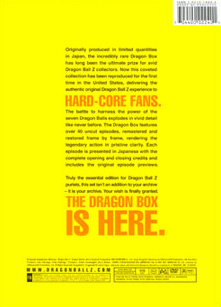
Originally produced in limited quantities in Japan, the incredibly rare Dragon Box has long been the ultimate prize for avid Dragon Ball Z collectors. Now this coveted collection has been reproduced for the first time in the United States, delivering the authentic original Dragon Ball Z experience to hard-core fans.
The battle to harness the power of the seven Dragon Balls explodes in vivid detail like never before. The Dragon Box features over 40 uncut episodes, remastered and restored frame by frame, rendering the legendary action in pristine clarity. Each episode is presented in Japanese with the complete opening and closing credits and includes the original episode previews.
Truly the essential edition for Dragon Ball Z purists, this set isn’t an addition to your archive – it is your archive. Your wish is finally granted.
The Dragon Box is here.
A current FUNimation catalog pamphlet is enclosed with the box, as well as a double-sided flyer for the latest Dragon Ball video games:
At this point, we pretty much know what to expect from FUNimation in terms of packaging and content for these sets. There are no surprises, other than the bottom part of the box not yet peeling away as it instantly did with the first release.
The Extra Stuff:
There are no on-disc “extras” for this second Dragon Box set from FUNimation. It is unclear if any future sets will have “extras” as seen on the original Japanese limited-edition Dragon Boxes, such as commercials, the TV specials, etc. The packaging (including the Dragonbook) are the true “extras” for this set, and are all icing on the top of the pristine-presentation of the visual and audio content.
Unlike the first set (with a couple minor issues), there is little to report on with the second release. FUNimation’s own closing credits appear to be updated and no longer reference the work of those responsible for the prior orange bricks.
Final Thoughts:
What more is there to say? We are now two volumes in to what is essentially our “dream release” for the series. With the presentation being what it is, any question about “purchase” or “not purchase” comes down to the actual content of the episodes in this set. In that regard, it may not be the highest point in the series, but there is enough worthwhile material to satisfy almost every type of fan. The fights are great, the storyline revelations are genuinely interesting, the new characters are engaging and believable…
For essentially a quarter of the price that the Japanese audience paid for their two gigantic DBZ TV “Dragon Box” sets, American fans will be able to get the same 291 episodes in a video and audio format that very closely rivals the original release. This is what we wanted, and now that we have it, we overwhelmingly recommend it. Did you expect something else…?
Purchase This Item:
Dragon Box Z (DBZ TV) Volume 2 may be available at the following online retailers:

